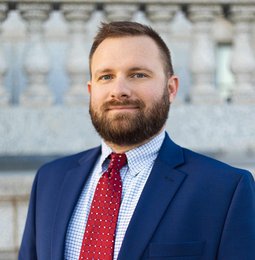Dustin Roten

Address:
4800 Oak Grove Drive
Pasadena, CA 91109Curriculum Vitae:
Click hereMember of:
Tropospheric CompositionPostdoctoral Researcher
Biography
Dr. Dustin Roten has a broad academic background. Before completing a Ph.D. in Atmospheric Sciences at the University of Utah, he earned an M.S. in Engineering Physics, an M.A. in Mathematics, and a B.S. in Physics & Mathematics from Appalachian State University. His primary research interest lies in the study of urban CO2 emissions using space-based remote sensing instruments (OCO-2, OCO-3). Much of his work involves using Bayesian inversion techniques and atmospheric models to link these atmospheric observations to gridded estimates of urban CO2 fluxes (“emission inventories”). During graduate school at Appalachian State University, he spent time studying uncertainties associated with these emission inventories. As an undergraduate, he worked App State’s Ion Trapping Laboratory housed in the Department of Physics and Astronomy. Beyond research, Dustin has spent time teaching math and physics courses at the high school and community college levels.
Education
- Ph.D. – Atmospheric Sciences, University of Utah (2023)
- M.S. – Engineering Physics, Appalachian State University (2018)
- M.A. – Mathematics, Appalachian State University (2018)
- B.S. – Physics & Mathematics, Appalachian State University (2015)
Professional Experience
- Jet Propulsion Laboratory – Postdoctoral Researcher (2023 - present)
- University of Utah – Graduate Research Assistant (2018 - 2022)
- Forsyth Technical Community College – Adjunct Math Instructor (2020 - 2022)
- Global Change and Sustainability Center (University of Utah) – Graduate Fellow (2018 - 2019)
- Appalachian State University – Graduate Research Assistant (2016-2018)
- Wilkes Community College – Adjunct Physics Instructor (2016)
- Ashe County High School – Math Teacher (2015-2016)
- Appalachian State University – Undergraduate Research Assistant (2012 - 2015)
Research Interests
- Remote sensing of atmospheric CO2 with space-based instruments
- Urban CO2 emissions
- Atmospheric inversion techniques
- Carbon cycle science
- Bayesian statistics
- Mathematical modeling
- STEM Education
Selected Publications
❖ Peer-Reviewed Publications
- D. Roten, J. C. Lin, D. Wu, T. Oda, E. Kort. Using the OCO-3 Instrument to Constrain On-road CO2 Emissions in the Los Angeles Basin. Geophysical Research Letters. 2023. (in prep.)
- D. Roten, J. C. Lin, L. Kunik, D. Mallia, D. Wu, T. Oda, E. Kort. The Information Content of Dense Carbon Dioxide Measurements from Space: An Urban-Focused Inversion Approach with Simulated Data from the OCO-3 Instrument. Atmospheric Chemistry and Physics Discussions. 2022. (DOI: 10.5194/acp-2022-315)
- D. Roten, D. Wu, B. Fasoli, T. Oda, J. C. Lin. An Interpolation Method to Reduce the Computational Time in the Stochastic Lagrangian Particle Dispersion Modeling of Spatially Dense XCO2 Retrievals. Earth and Space Science. 2021. (DOI: 10.1029/2020EA001343)
- M. Kiel, A. Eldering, D. Roten, J. C. Lin, S. Feng, R. Lei, T. Lauvaux, T. Oda, C. M. Roehl, J. Blavier, L T. Iraci. Urban-focused satellite CO2Observations from the Orbiting Carbon Observatory-3: A First Look at the Los Angeles Megacity. Remote Sensing of Environment – Remote Sensing of Greenhouse Gas Emissions [Special Issue]. 2021. (DOI: 10.1016/j.rse.2021.112314)
- S. Hogue, D. Roten, E. Marland, G. Marland. Gridded Estimates of CO2 Emissions: Uncertainty as a Function of Grid Size. Mitigation and Adaptation Strategies for Global Change. 2018. (DOI: 10.1007/s11027-017-9770-z)
❖ Book Chapters
- D. Roten, R. Andrew, G. Marland, R. Bun, M. Crippa, D. Gilfillan, M. Jones, G. Janssens-Maenhout, E. Marland, R. Quadrelli. CO2 Emissions from Energy Systems and Industrial Processes: Inventories from Data- and Proxy-driven Approaches in Balancing Regional Greenhouse Gas Budgets: Accounting for Natural and Anthropogenic Flows of CO2 and other Trace Gases. Elsevier. 2022.
- (ISBN: 978-0-12-814952-2)